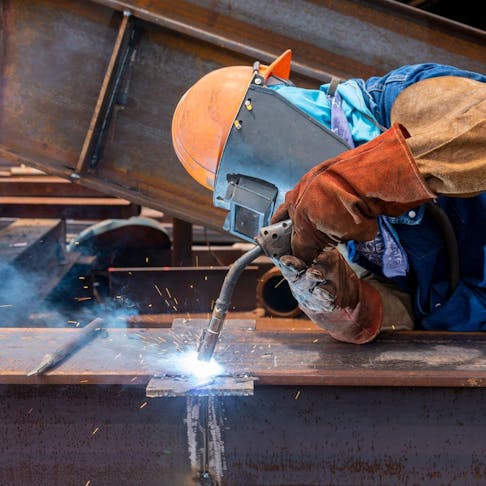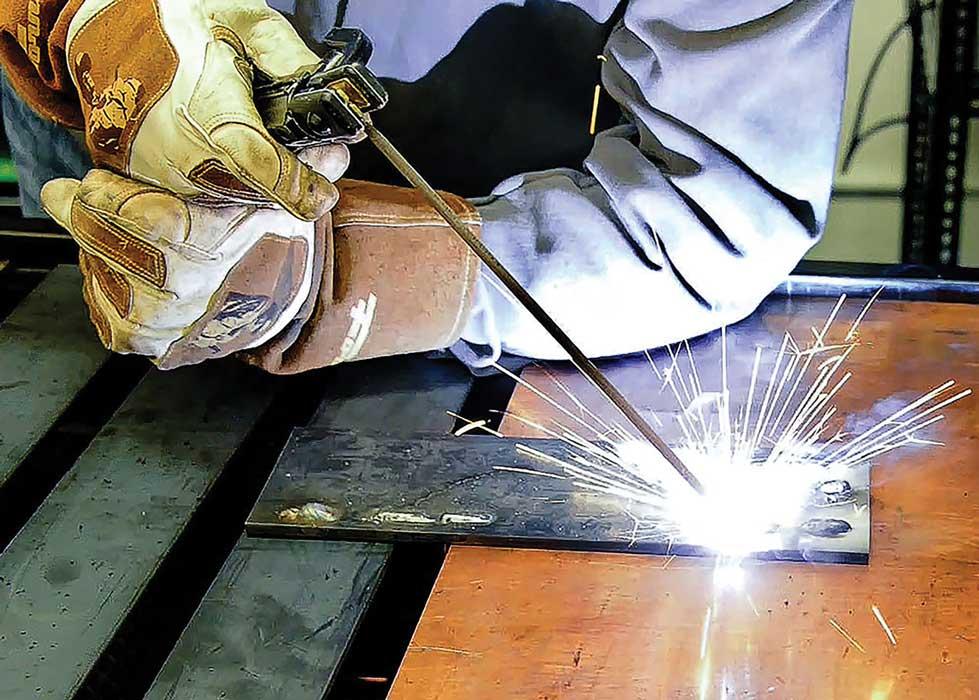Common Welding Repair Issues and Just How to Address Them Efficiently
Welding repair services frequently run into a variety of problems that can jeopardize the integrity of the end product. Common troubles include poor penetration, porosity, and misalignment, to name a few. Each issue offers unique difficulties that need details techniques for resolution. Comprehending these issues is important for welders aiming to improve their results and abilities. This conversation will certainly discover these typical welding repair work issues and efficient approaches to address them.
Inadequate Penetration
Insufficient penetration happens when the weld metal stops working to fully fuse with the base product, leading to weak joints and possible architectural failings. This problem frequently originates from not enough warm input, wrong electrode angle, or improper welding speed. Welders might come across inadequate penetration due to a mistake of the required criteria for a particular product thickness or type. Furthermore, contamination on the base product's surface can impede efficient bonding, worsening the trouble. To deal with poor penetration, welders must assure proper settings on their devices and keep a tidy job surface area. Normal assessment of welds is suggested to recognize any deficiencies early, enabling prompt adjustments and the avoidance of jeopardized structural stability in welded settings up.
Porosity
Porosity is a common flaw in bonded joints that shows up as small gas bubbles entraped within the weld steel. This problem can endanger the integrity of the weld, resulting in decreased strength and possible failing under stress. Welding. Porosity commonly develops from contamination, wetness, or inappropriate welding strategies, which allow gases to leave into the liquified weld swimming pool. To attend to porosity, welders must assure correct surface area preparation, maintain a clean working atmosphere, and utilize appropriate welding criteria. In addition, selecting the right filler material and protecting gas can mitigate gas entrapment. Routine inspection and screening of welds can help identify porosity early, guaranteeing prompt corrective activities are taken, therefore protecting the top quality and integrity of the bonded framework
Misalignment
Imbalance in welding can arise from numerous aspects, including incorrect configuration and thermal growth. Comprehending the root causes is crucial for efficient resolution. A number of improvement techniques are offered to realign components and guarantee structural honesty.
Sources of Imbalance
Welding misalignment often stems from a range of underlying concerns that can compromise structural stability. One main cause is inappropriate fit-up of components prior to welding, which can bring about gaps and uneven surface areas. Variations in thermal development throughout the welding process can likewise result in distortion, especially if the products being joined have various coefficients of growth. Additionally, poor fixturing and securing may fall short to hold components firmly in location, resulting in movement during welding. Poorly conserved tools, consisting of welding equipments and devices, might present disparities in the weld grain, more adding to misalignment. Finally, driver error, stemming from inadequate training or experience, can likewise play a considerable role in developing misaligned welds.
Correction Strategies Offered
Resolving imbalance properly calls for a mix of corrective techniques tailored to the certain issues available. One common method is making use of jigs or fixtures to hold elements in the appropriate position throughout welding, making certain constant alignment. In addition, preheating the products can help in reducing distortion and enhance fit-up. For considerable misalignment, mechanical adjustment methods, such as utilizing hydraulic jacks or clamps, can be utilized to remedy the setting before welding. Post-weld warm treatment may additionally be needed to soothe stresses brought on by misalignment. Ultimately, mindful inspection and adjustment throughout the setup stage can avoid imbalance problems from coming to be substantial problems, promoting a smoother welding process and boosting general structural honesty.
Distortion
Distortion is a common difficulty in welding that can emerge from various factors, consisting of uneven heating & cooling. Understanding the causes of distortion is important for applying reliable avoidance techniques. Resolving this problem not only boosts architectural integrity yet also enhances the general top quality of the weld.
Reasons for Distortion
When subjected to the extreme heat of welding, products commonly undertake modifications that can lead to distortion. This phenomenon mainly develops from thermal development and tightening during the welding process. As the weld location warms up, the material broadens; upon cooling, it contracts, which can develop inner tensions. On top of that, irregular heating across a workpiece can worsen these tensions, leading to warping or bending. The kind of material likewise plays a significant function; steels with differing thermal conductivity and coefficients of development might respond differently, bring about unforeseeable distortions. Furthermore, bad joint style and poor fixturing can add to imbalance during welding, enhancing the probability of distortion. Comprehending these causes is crucial for reliable welding repair and prevention methods.
Avoidance Techniques
Reliable prevention methods for distortion throughout welding concentrate on managing heat input and making sure proper joint design. Maintaining a regular heat input aids to minimize thermal growth and tightening, which can lead to distortion. Utilizing methods such as preheating the work surface can also decrease the temperature slope, promoting consistent heating. Additionally, choosing suitable joint designs, such as T-joints or lap joints, can improve stability and minimize stress focus. Applying appropriate fixturing to protect the work surfaces in position better help in preserving placement throughout the welding process. Ultimately, staggered welding sequences can disperse warm more evenly, avoiding local distortion. By applying these techniques, welders can substantially lower the likelihood of distortion and enhance the overall quality of their welds.
Breaking
Cracking helpful resources is an usual problem run into in welding repair services, usually arising from numerous factors such as incorrect cooling prices, material selection, or insufficient joint prep work. The occurrence of fractures can considerably endanger the integrity of the weld, leading to prospective failings during operation. To address this concern, welders have to first assess the source, making sure that products are compatible and properly picked for the particular application. Additionally, controlling the air conditioning rate during the welding procedure is necessary; fast cooling can induce tension and result in splitting. Appropriate joint design and preparation also contribute to decreasing the danger. Executing these methods can boost weld high good welds quality and sturdiness, inevitably lowering the chance of breaking in finished weldments.

Insufficient Combination
A substantial problem in welding repairs is insufficient combination, which occurs when the weld steel does not adequately bond with the base material or previous weld passes - Montana Mobile Welding and Repair Welding. This issue can result in weak points in the joint, possibly jeopardizing the honesty of the welded framework. Factors adding to incomplete blend include not enough heat input, improper welding strategy, and contamination of the surfaces being joined. To address this concern effectively, welders ought to assure proper pre-weld cleaning and surface preparation, along with change their welding specifications to attain appropriate penetration and fusion. Normal examination during the welding procedure can likewise help recognize insufficient combination early, permitting for timely corrective steps to boost the overall high quality of the weld
Overheating
While welding repair services can boost structural stability, overheating offers a considerable difficulty that can lead to material degradation. Excessive warm during welding can change the mechanical residential properties of steels, causing lowered strength, boosted brittleness, and bending. This sensation is specifically vital in high-stress applications where architectural dependability is vital. Determining overheating can include aesthetic evaluations for discoloration or distortion, as well as checking temperature during the welding procedure. To alleviate the dangers connected with overheating, welders should use ideal strategies, such as regulating warmth input, readjusting travel speed, and utilizing ideal filler products. Additionally, executing pre- and post-weld warmth treatments can aid bring back material residential or commercial properties and improve the overall quality of the repair, guaranteeing long-term efficiency and safety.
Regularly Asked Inquiries
What Are the Typical Indications of a Welding Flaw?

Just How Can I Check My Welds for Top quality?
To examine welds for top quality, one can make use of visual examinations, ultrasonic testing, and radiographic approaches. Each technique assures structural honesty, determines issues, and verifies adherence to defined criteria, eventually enhancing the reliability of the welded joints.
What Security Precautions Should I Take While Welding?
When welding, one should prioritize safety by using suitable personal protective equipment, making certain proper ventilation, protecting flammable view it products away, keeping a tidy work area, and understanding surroundings to stop mishaps and injuries.
Can I Fix a Weld Without Redoing the Entire Joint?
Fixing a weld without redesigning the entire joint is feasible, depending upon the damage (Belgrade Welding). Techniques such as grinding, including filler material, or making use of a welding process can properly attend to specific imperfections while protecting the bordering framework
What Equipment Are Vital for Effective Welding Services?
Necessary tools for reliable welding fixings include a welding device, wire brush, grinder, safety gear, clamps, and filler products. Each tool plays an important function in making certain high quality and safety and security throughout the fixing procedure. Porosity typically emerges from contamination, wetness, or incorrect welding techniques, which enable gases to run away into the molten weld pool. Inadequately maintained devices, consisting of welding equipments and tools, may present disparities in the weld grain, further contributing to misalignment. When subjected to the extreme warmth of welding, materials often undertake changes that can lead to distortion. Fracturing is an usual problem come across in welding repair work, frequently resulting from numerous elements such as inappropriate air conditioning rates, material choice, or poor joint preparation. A considerable concern in welding repair work is insufficient blend, which happens when the weld steel does not adequately bond with the base material or previous weld passes.